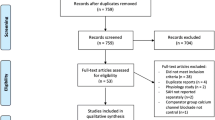Summary
A series of studies on patients who had suffered a subarachnoid haemorrhage (SAH) demonstrated high urinary catecholamine and plasma cortisol levels over a 3- week period, catecholamine- linked electrocardiographic (ECG) changes (some of which were associated with low total body potassium levels), and the ability of the β- blocker propranolol to reverse some of the ECG abnormalities. In addition, propranolol was shown to prevent the necrotic lesions produced in the myocardium following an SAH.
In this double-blind, placebo-controlled study, 204 patients presenting within 48 hours of an SAH were randomly assigned to 2 groups, 1 receiving standard management only, the other receiving in addition medication with the adrenergic blocking agents propranolol and phentolamine (or propranolol alone) for 3 weeks. The results show that early β- blockade benefits patients with subarachnoid haemorrhage for up to 1 year in terms of lesser neurological deficits and death.
The effects of propranolol and the selective β- blocker, atenolol, on plasma creatinine phosphokinase levels and clinical outcome on a small group of SAH patients suggests that the beneficial effects of β- blockade may be due its prevention of the systemic complications following an SAH.
Similar content being viewed by others
References
Burch, G.E; Sun, S.C.; Colcolough, H.L.; De Pasquale, N.P. and Sohal, R.S.: Acute myocardial lesions following experimentally induced intracranial haemorrhage in mice: a histological and histochemical study. Archives of Pathology 84:517–521 (1967).
Connor, R.C.R.: Myocardial damage secondary to brain lesions. American Heart Journal 78:145–148 (1969).
Crompton, M.R.: Hypothalamic lesions following the rupture of Berry aneurysms. Brain 86:301–314 (1963).
Cruickshank, J.; Neil-Dwyer, G. and Brice, J.: The possible role of catecholamines, corticosteroids and potassium in the production of electrocardiographic abnormalities associated with subarachnoid haemorrhage. British Heart Journal 36:697–706 (1974).
Cruickshank, J.; Neil-Dwyer, G. and Lane, J.: The effect of oral propranolol upon ECG changes occurring in subarachnoid haemorrhage. Cardiovascular Research 9:236–245 (1975).
Cummins, B.H. and Griffiths, H.B.: Intracarotid phenoxybenzamine for cerebral arterial spasm. British Medical Journal 1: 382–383 (1971).
Doshi, R. and Neil-Dwyer, G.: Hypothalamic and myocardial lesions after a subarachnoid haemorrhage with possible clinical implications. Journal of Neurosurgery 52:295–301 (1980).
Greenhoot, J.H. and Reichenbach, D.D.: Cardiac injury and subarachnoid haemorrhage. A clinical, pathological and physiological correlation. Journal of Neurosurgery 30:521–531 (1969).
Hawkins, W.E. and Clower, B.R.: Myocardial damage after head trauma and stimulated intracranial haemorrhages in mice: the role of the autonomic nervous system. Cardiovascular Research 5:524–529 (1971).
Hoffman, B.F. and Singer, D.H.: Appraisal of the effects of catecholamines on cardiac electrical activity. Annals of the New York Academy of Science 139:914–939 (1967).
Hunt, D. and Gore, I.: Myocardial lesions following experimental intracranial haemorrhage. Prevention with propranolol. American Heart Journal 83:232–236 (1972).
Melville, K.L.; Blum, G.; Shister, H.E. and Silver, M.D.: Cardiac ischaemic changes and arrhythmias induced by hypothalamic stimulation. American Journal of Cardiology 12:781–791 (1963).
Neil-Dwyer, G.; Cruickshank, J.; Stott, A. and Brice, J.: The urinary catecholamine and plasma cortisol levels in patients with a subarachnoid haemorrhage. Journal of Neurological Science 22: 375–382 (1974).
Neil-Dwyer, G. and Cruickshank, J.: The blood leucocyte count and its prognostic significance in subarachnoid haemorrhage. Brain 97:79–86 (1974).
Neil-Dwyer, G.; Walter, P.; Cruickshank, J.; Doshi, R. and O’Gorman, P.: Effect of propranolol and phentolamine on myocardial necrosis after subarachnoid haemorrhage. British Medical Journal 2:990–992 (1978).
Neil-Dwyer, G.; Walter, P.; Shaw, H. and Hodge, M.: Plasma renin activity in patients after subarachnoid haemorrhage. Neurosurgery 7(6):578–582 (1980).
Offerhaus, L. and Van Gool, J.: ECG changes and tissue catecholamines in experimental subarachnoid haemorrhage. Cardiovascular Research 3:433–440 (1969).
Oliver, I.T.: A spectrophotometric method for the determination of creatine phosphokinase and myokinase. Biochemical Journal 61:116–122 (1955).
Reichenbach, D.D. and Benditt, E.P.: Catecholamines and cardiomyopathy. Human Pathology 1:125–150 (1970).
Rosalki, S.B.: An improved procedure for serum creatine phosphokinase determination. Journal of Laboratory and Clinical Medicine 69:696–705 (1967).
Selye, H.: The evolution of the stress concept. American Journal of Cardiology 26:289–299 (1970).
Smith, B.: Cerebral pathology in subarachnoid haemorrhage. Journal of Neurology, Neurosurgery and Psychiatry 26:535–539 (1963).
Waagstein, F.; Hjalmarson, A.; Varnauskas, E. and Wallentin, I.: Effect of chronic beta-adrenergic receptor blockade in congestive cardiomyopathy. British Heart Journal 37:1022–1036 (1975).
Author information
Authors and Affiliations
Rights and permissions
About this article
Cite this article
Neil-Dwyer, G., Walter, P., Cruickshank, J. et al. β-Blockade in Subarachnoid Haemorrhage. Drugs 25 (Suppl 2), 273–277 (1983). https://doi.org/10.2165/00003495-198300252-00083
Published:
Issue Date:
DOI: https://doi.org/10.2165/00003495-198300252-00083




